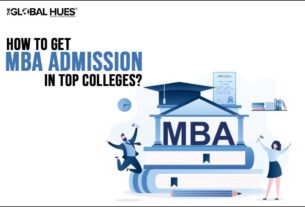Cricket is not just a game. It is a fierce, burning target that has been in dalliance with fans for ages. The advent of live coverage changed this. Every boundary and every wicket was made special and memorable. Voicing through radio commentary to sports telecasting in HD in a matter of a few decades, cricket broadcasting evolution has been marvelous. Let’s see how it all began.
The Birth of Television in Cricket
People saw the first live-action on their screens in the 1920s with the help of radio. Visualize the scenario where people who were fans at that time only got to imagine through the words of the commentators and were fixated on radios. In that early period, cricket played its first geography into homes, a geography that overshot the stadium space.
Both the interest in cricket and the enjoyment of listening to such live matches increased. Fans were glued to the TV not only because they loved the sport but also because they wanted the action. Many like online cricket betting as they experience each swing of the bat, which was so articulated. Radio began to provide a new and more intimate experience of cricket.
Change to Television
The evolution of cricket from radio to television in the 1950s must be described as revolutionary. As a result, the supporters were now actively participating in the action. This improvement in technology was sure to add new dimensions of excitement. These are the major events during this process of transition.
- The first televised match was in the United Kingdom in 1938.
- The start of color television broadcasting in the 70s.
- Inclusion of multi-camera coverage in the 80s.
- Incorporation of slow-motion televised replays during the 90s.
All these episodes of sports had a great advantage in that television very much helped in the overall growth of the medium.
Milestones in Live Cricket Broadcasting
Historical milestones regarding the live broadcasting of cricket to the fans have also indicated some technological advancements. The very first radio matches today’s stages with high definition and multiple angles. Each and every one of them gave the viewers a perspective of the event in motion. You can point out that with every new technique and equipment, every time you watched cricket, the experience was heightened, making way for the future of sports television.
The First Live TV Broadcast
The first televised cricket match happened in 1938 in England, and this has changed the way the game is consumed to date. At last, followers could directly view a game and see the action as their respective favorite teams played. This shift to a new media platform was considered revolutionary, as it enabled further globalization of cricket. Finally, it was no longer a game of only radio sense but leaped into the sitting rooms of millions worldwide.
Advancements in the Way of Broadcasting Cricket Matches
Fans have experienced tremendous innovation in cricket broadcasting. The introduction of extremely high-definition feeds, the provision of numerous camera angles, and the use of slow motion help enhance the game’s sight. Other factors, such as ball-tracking systems and the decision review system (DRS), also make the broadcasts more enjoyable and accurate. All these improvements completely changed the way cricket is done, making every single match a blast.
The Role of Commentary in Broadcasts
Relevance is added by the commentary, as the understanding of the sport is magnified through the broadcast. It is the voice of a commentator that fills an ordinary man with so many intangibles, making the moment cherished. There is the analysis of the action in broadcasting, and there are feelings attached to every ball of every over. Key roles of cricket commentary:
- Description: Making the audience visualize the action in the match.
- Analysis: Providing tactical and player-related explanations of the game and its events.
- Emotion: Packaging the happiness and stress factors of the game, building up enthusiasm.
- Engagement: Sustaining the sociable audience, using wit and erudition to interest viewers.
Modern Broadcasting Techniques
Nowadays, cricket matches are no longer shown to viewers without any technological enhancement. Every little detail is captured, and no angle is left out, as there are high-definition cameras to take care of that. There have come new techniques that are even more entertaining: ultra-slow motion replays, cameras hanging over the ground, and drones.
In addition, the combination of the use of such applications with passive watching of a match also explains well to a viewer what is happening. Statistics, analytics and expectations help to make the consumption broad and keep the audience active and informed during the whole performance. It has changed the way in which fans watch cricket on their screens.
Future Prospects
Cricket broadcasting has even increased prospects for the future. Improvements in virtual reality and AI analysis will present cricket matches to the fans in ways that they have not been presented before. Love for cricket coupled with new brain-boosting technologies guarantees more exciting viewing experiences for the fans for long periods. There is likely one certainty—the passionate gateway endeavors of fans’ beloved cricket will leave them interested in the ground, meaning off TV, too.
*The information in this article does not necessarily reflect the views of The Global Hues. We make no representation or warranty of any kind, express or implied, regarding the accuracy, adequacy, validity, reliability, availability or completeness of any information in this article.*



